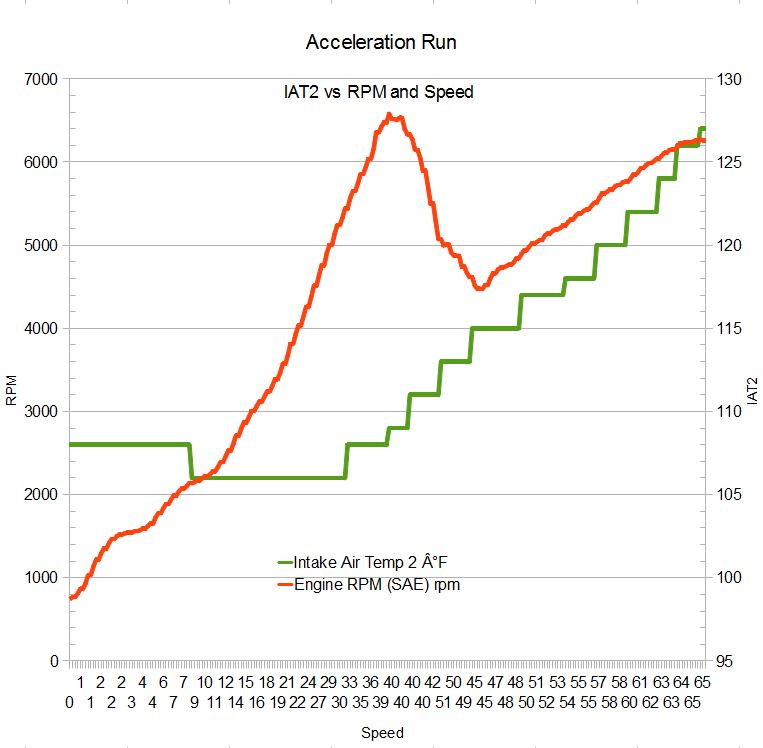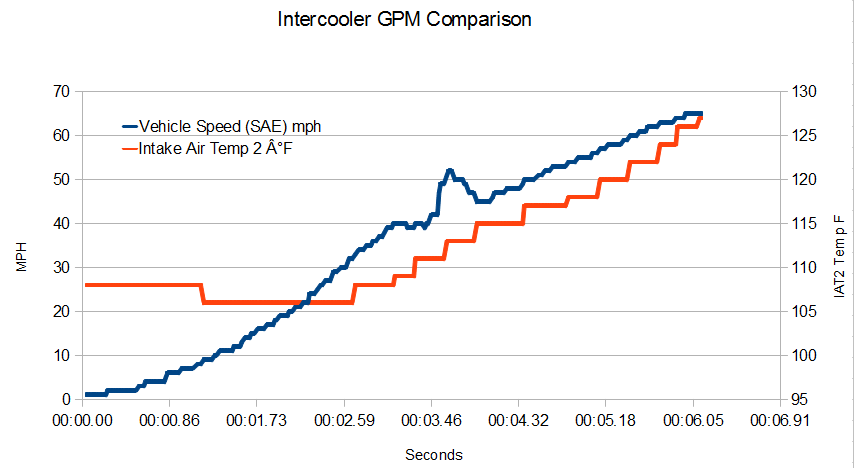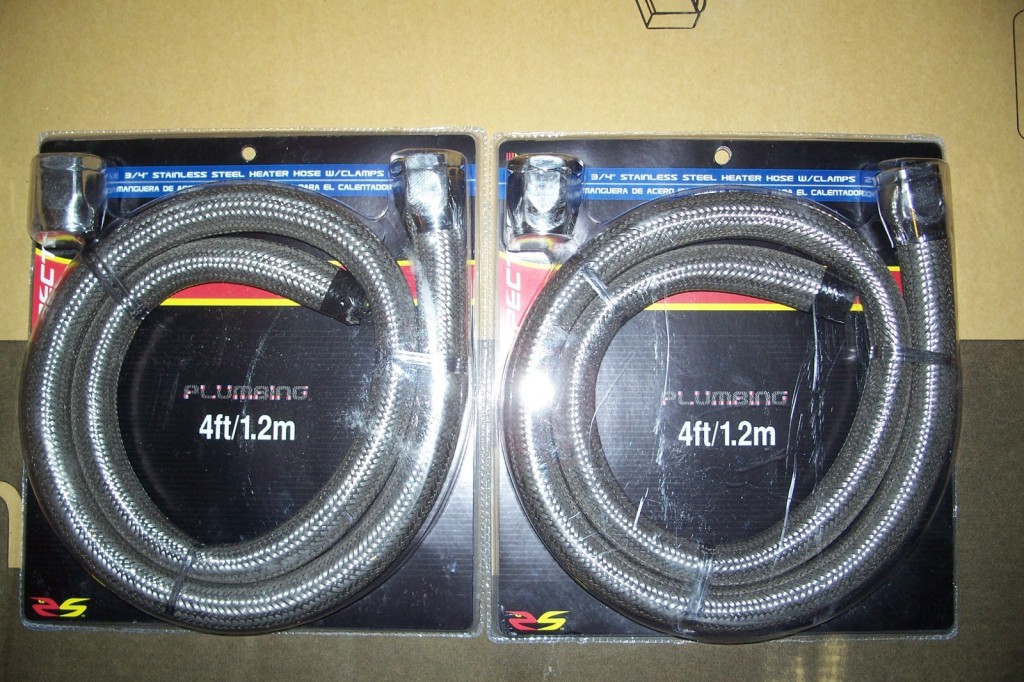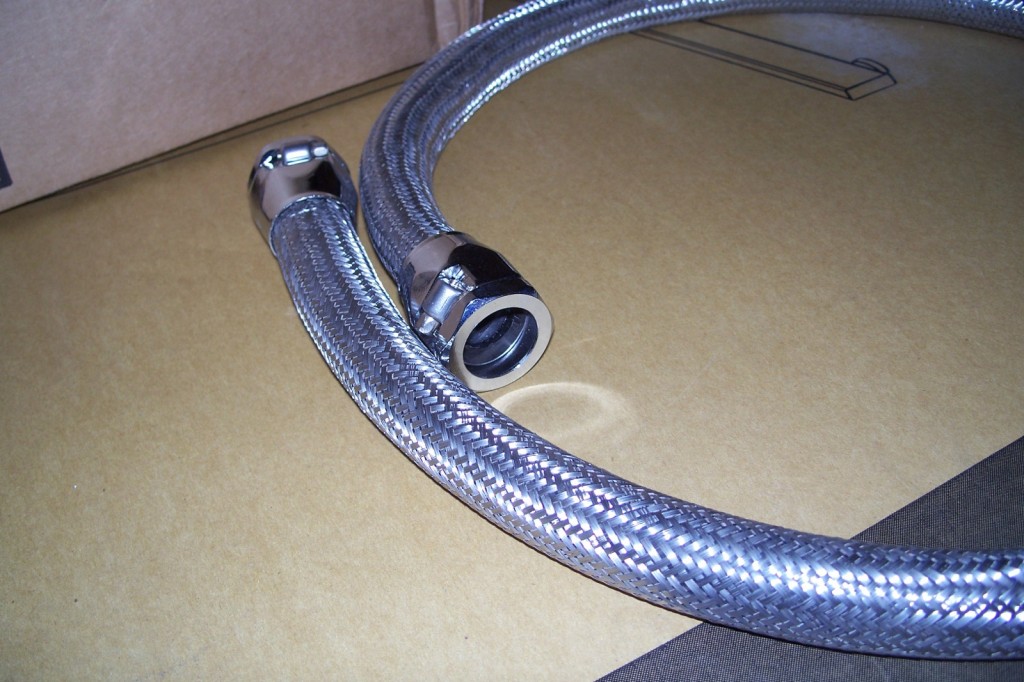I am thinking more about this graph of IAT2 over time as the Cadillac STS-V accelerates:
Let’s consider the stock, OEM Bosch intercooler pump. This pump is rated for 8 gallons per minute (gpm) against no resistance, and likely does 5 gpm in the STS-V system. It is overall a very good pump, and very efficient.
Now, a gpm is 1/60=0.083 gallons per second (gps). So 5 gpm would be 0.42 gps. The STS-V can accelerate 0-60 in under 5 seconds. So on an average 0-60 run, the intercooler pump moves 5 sec x 0.42 gps = 2 gallons of fluid through the intercooler.
Now, keep in mind that the OEM system had 2.6 quarts of fluid, and my new HX added 2 quarts, so now my system has 4.6 quarts or just 1.15 gallons. A small part of the capacity is likely counted in the side fill loop, so we’ll say 1 gallon.
So on an average 0-60 run, the pump can move 2 gallons of fluid through the intercooler, and the system has 1 gallons in the main loop, so the coolant sees the inside of the intercooler twice in that 5 seconds. Put another way, my current 4 quart capacity system has a circuit time of ~3 seconds — every ~3 seconds the system circulates the entire coolant capacity.
For the intercooler testing I was focused on just getting an acceleration spike and not best time. But if we look at this graph of speed vs time vs IAT2,
What it appears to show is that the IAT2 temps are near constant for the first 3.27 seconds (looking at the exact figures in the data table), and rise dramatically after that. Now it is dangerous to read too much into a single sample, but this seems to validate our figures that at 3.27 seconds the intercooler coolant starts a 2nd loop through the system.
From this I conclude that a system with a 2 gallon capacity of coolant would have fresh, cool fluid in the intercooler for the first 6 seconds. Now 0-60 mph is not the end all and be all of performance. To keep uncirculated coolant in the intercooler for a dyno run one might need 10 seconds of fluid or 3 gallons — as a thumbrule think 1 gal per 3 seconds.
Also, if you speed up the pump, you’ll need more system capacity to offset the faster circuit time.





